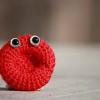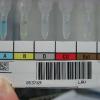
Patty
Reputation Activity
-
 Patty got a reaction from frenchie in Blood Bank staff
Patty got a reaction from frenchie in Blood Bank staff
I too am the only dedicated Blood Banker . I have found it more and more challenging as staff is quickly retiring and being replaced with young grad generalists. I try to reinforce the theory behind all of the blood bank tests in order for them to grasp the whole picture for trouble shooting those patient's that are the exceptions to the rules but there is only so much new grads can absorb during training. They are learning our processes, a new computer system, and often have not been in Blood Bank for over a year and that was only for a rotation during school. It takes years to become a seasoned tech. Between training new techs, 6 month competencies, annual competencies, meeting changing standards, and dealing with shortages I find it a little overwhelming. Unfortunately I believe this is the new Norm and agree we are in a staffing crisis which needs addressed now.
-
 Patty reacted to Dansket in Cord Blood Gel DAT QC
Patty reacted to Dansket in Cord Blood Gel DAT QC
I think you need to demonstrate in Day of Use/Daily QC that the Anti-IgG Gel card reacts properly with positive and negative control, not only in the Indirect Antiglobulin Test (indirect agglutination with 37C incubation), but also in the Direct Antiglobulin Test (direct agglutination without incubation).
-
 Patty got a reaction from Malcolm Needs in Programmed transfusion at predefined frequencies
Patty got a reaction from Malcolm Needs in Programmed transfusion at predefined frequencies
I believe "the philosophy of not needing a transfusion at all if only one unit is needed" has changed since the transfusion triggers have decreased. I would like to institute a hgb prior to each Red Cell transfusion order.
-
 Patty reacted to Malcolm Needs in Programmed transfusion at predefined frequencies
Patty reacted to Malcolm Needs in Programmed transfusion at predefined frequencies
I also remember when the general philosophy was, if you really needed only 1 unit, you really didn't need any, but that was before the time of "evidence-based transfusion".
As a Biomedical Scientist, rather than a Doctor, I always thought that a single unit transfusion (in an adult of course, rather than a baby) was an exercise in the production of alloantibodies, however, the work done by people to show that, not only can people survive on lower levels of haemoglobin than used to be thought, but that people actually thrive at these lower levels of haemoglobin, and spend shorter periods in hospital and get fewer post-operative infections, has convinced me (and thousands of other people) of the value of the single unit transfusion (and, as a side issue, it helps conserve the inventory).
-
 Patty got a reaction from ElinF in Small Platelet Incubator?
Patty got a reaction from ElinF in Small Platelet Incubator?
We have the i Series Helmer incubator and have had no problems
-
 Patty reacted to Dansket in Red Cell Storage Position
Patty reacted to Dansket in Red Cell Storage Position
We discontinued storing RBC units upright in holders years ago. You can observe "hemolysis or other changes in appearance" regardless of storage position, flat or upright.
-
 Patty got a reaction from AMcCord in cord blood weak D testing with positive IgG
Patty got a reaction from AMcCord in cord blood weak D testing with positive IgG
Report as Rh Indeterminate and treat as Rh+ for RHIG coverage of the Mom
-
 Patty reacted to tkakin in cord blood weak D testing with positive IgG
Patty reacted to tkakin in cord blood weak D testing with positive IgG
Thank you all for your response. I just realized I asked if you would order a fetal screen, but it should be a KLEI if they are weak D +.
-
 Patty got a reaction from ANORRIS in cord blood weak D testing with positive IgG
Patty got a reaction from ANORRIS in cord blood weak D testing with positive IgG
Report as Rh Indeterminate and treat as Rh+ for RHIG coverage of the Mom
-
 Patty got a reaction from Malcolm Needs in cord blood weak D testing with positive IgG
Patty got a reaction from Malcolm Needs in cord blood weak D testing with positive IgG
Report as Rh Indeterminate and treat as Rh+ for RHIG coverage of the Mom
-
 Patty got a reaction from TreeMoss in cord blood weak D testing with positive IgG
Patty got a reaction from TreeMoss in cord blood weak D testing with positive IgG
Report as Rh Indeterminate and treat as Rh+ for RHIG coverage of the Mom
-
 Patty got a reaction from tkakin in cord blood weak D testing with positive IgG
Patty got a reaction from tkakin in cord blood weak D testing with positive IgG
Report as Rh Indeterminate and treat as Rh+ for RHIG coverage of the Mom
-
 Patty reacted to Dansket in cord blood weak D testing with positive IgG
Patty reacted to Dansket in cord blood weak D testing with positive IgG
We report the newborn to be Rh Indeterminate, with a comment that the newborn is treated as if Rh Positive for purposes of determining the mother's RhIg candidacy. Additionally, the newborn may be tested in 4-6 months to determine the baby's true Rh type.
-
 Patty got a reaction from Dansket in RHD Molecular Testing
Patty got a reaction from Dansket in RHD Molecular Testing
Just curious to know how many labs interpret a Bioclone Anti-D tube reaction of 1+ as Rh Neg. The insert does state any agglutination is considered a positive result for D antigen.
-
 Patty reacted to AMcCord in Antigen Typing Charges
Patty reacted to AMcCord in Antigen Typing Charges
But if the donor was previously tested for any other patient and that patient was charged, you can't charge the current patient for antigen typing that particular unit.
-
 Patty reacted to AMcCord in Patient identifiers on BB samples
Patty reacted to AMcCord in Patient identifiers on BB samples
Exactly - patients should self identify, whenever possible, and that would be full name plus birth date. (We have had a few frequent flyers who would rattle off their MR#s when asked to identify themselves, but I think that was more about being a touch exasperated w/ our constant requests for them to tell us who they were rather than anything else.) And I agree that the birth date should be on the armband and the order for ID purposes. We do have it on the labels that go on our specimens, but it is not 'required' as an element of specimen ID.
The CAP requirement for patient specimens is: "All blood samples used for compatibility testing are labeled in the presence of the patient with:1. Patient's first and last name2. Unique identification number3. Date of collection4. A method to identify the phlebotomist."
AABB Stds say:
"Requests: Requests for blood, blood components, tests, tissue, and derivatives and records accompanying samples from the patient shall contain sufficient information to uniquely identify the patient, including two independent identifiers. The transfusion service shall accept only complete, accurate, and legible requests."
"Patient Samples: Patient samples shall be identified with an affixed label bearing sufficient information for unique identification of the patient, including two independent identifiers." They further say that the completed label has to be placed on the sample container at bedside; it has to identify the date/time of draw and the person(s) who collected the sample; that specimens have to be completely, accurately, and legibly labeled; and there should be a policy to reduce risk of misidentification of pretransfusion samples.
I believe that Joint Commission recommends following AABB guidelines.
So, as far as I know, the birth date is not 'required' on patient samples, but it is also not precluded from sample labeling. You can choose what your independent identifiers are and you can always have stricter requirements than standards in order to meet your needs. We choose to use full name, MR# and a separate armband ID for inpatients, giving us 3 independent identifiers - not required, but we've chosen that protocol to meet our needs.
-
 Patty reacted to AMcCord in Patient identifiers on BB samples
Patty reacted to AMcCord in Patient identifiers on BB samples
Blood bank specimens here require 2 patient identifiers plus a sticker from a blood bank armband that is directly attached to a patient appendage. Our required identifiers for inpatients are full name and MR#. The labels that print at bedside include the birthdate, but birthdate is not a required identifier. We do, however, use birthdate as one possible patient identifier for outpatients. Specimens from outside clinics for reference work (prenatal panels) are acceptable with the name and a birthdate.
We've stuck with our blood bank armbands because we've watched how some patients have gotten armbanded on the floor...staff member walks into room and slaps on band OR staff member walks into room, says 'Are you Fred?' and slaps on armband OR any other similar variation. That is definitely not policy, but it is human behavior. Blood bank specimens are lab draw, with some exceptions from the OR. We have a very strict policy about the removal of blood bank armbands - only we cut them off, or give permission for them to be cut off, unless the patient is being discharged. We've been doing that for long enough that we lose almost no bands. We have the full support of Quality to enforce the armband policy.
-
 Patty got a reaction from Ensis01 in Patient identifiers on BB samples
Patty got a reaction from Ensis01 in Patient identifiers on BB samples
I believe you are suppose to ask the patient to identify themselves if at all possible. Using the name and DOB are two things each patient is likely to know. If it is not on their label or armband how are you suppose to know what you are checking is accurate? I doubt patient's know their MR# or Accn#.
-
 Patty reacted to carolyn swickard in Cooler Validation
Patty reacted to carolyn swickard in Cooler Validation
I can give you my current one, but it is specific to dataloggers and Credo coolers. Hope it helps
Remember also - for the primary validation - the FDA likes to see the testing done under minimum loads (1 or 2 units) and maximum loads (as many as the container will hold).
Validation coolers 4.doc
-
 Patty reacted to AMcCord in Direct antiglobulin test
Patty reacted to AMcCord in Direct antiglobulin test
I'd say that you have to consider the capabilities of your staff. I do ask my techs to use the microscope for DATs. They are all generalists and their time in blood bank is limited. Some of them shake too hard, in spite of my best efforts to fix that problem. They use a mirror, but some don't use a mirror well. So, in order to not miss weak positive reactions they use the scope with a tube roller. We also have a definition for microscopic agglutination (right out of the Technical Manual) that says it is a clump of 4-5 cells (though I do tell them that they should be cautious with this - if tests look suspicious, check them out, don't blindly ignore what you see). When I train, I stress the difference between a clump of cells that are friendly/kissing and a clump of cells that 'love each other' (agglutination). They do very well - false positives are rare. I don't see a lot of unnecessary work being done.
-
 Patty reacted to Cathy in Quotient BB reagents
Patty reacted to Cathy in Quotient BB reagents
We have used their C3 coated cells for quite a while with no problems at all.
-
 Patty reacted to Juray in Quotient BB reagents
Patty reacted to Juray in Quotient BB reagents
We use 3 cell screen, 4 cell screen, IgG check cells and A1 and B cells for tube tests, plus a few of the monoclonal antisera. Only negative comment I have received from staff is that the IgG check cells tend to be weaker than Immucor, more like 2-3+ rather than 3-4+. Saved a lot of money making this switch, and we are looking at changing a few more reagents in 2019.
-
 Patty got a reaction from mcgouc in COM.30450 New Reagent Lot Verification
Patty got a reaction from mcgouc in COM.30450 New Reagent Lot Verification
I would check with CAP again before reverting to your old procedure. I called them a while back and was told it only applied to Fetal Screen Kits and parallel testing was required. I also listened to a webinar where this was discussed and they said running old QC on the new lot or a previous lot patient was required for CAP. I have found in the past that you may get different answers to a question depending on who you talk to at CAP. I often write an email instead of calling and then I have their explanation on record for my inspection.
-
 Patty reacted to exlimey in proper use of PPE in the lab
Patty reacted to exlimey in proper use of PPE in the lab
Along the same lines......the basis of my personal safety approach: "If it's wet, and NOT yours, don't touch it."
-
 Patty reacted to pstruik in proper use of PPE in the lab
Patty reacted to pstruik in proper use of PPE in the lab
'Use common sense, and don't lick anything in the lab' - now that's my kind of policy!




